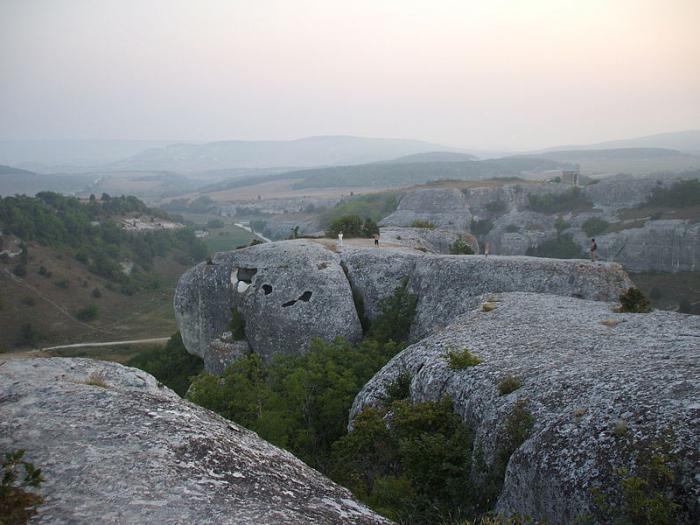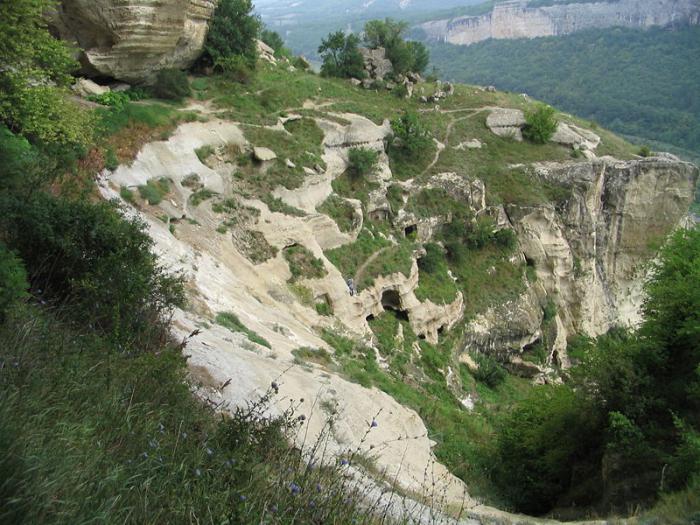Eski-Kermen is a Byzantine medieval fortified city located in the south-west of the Crimean peninsula. It appeared in the VI century and existed until the end of the XIV century, when it was destroyed by the Mongols.
How it all began...
From the 10th century, Eski-Kermen began to grow and develop rapidly. It has become a major craft and trade center. Nevertheless, agriculture was considered the main occupation here. Eski-Kermen was surrounded by orchards and vineyards. Archaeologists have found the remains of irrigation canals, as well as terraces with vines, which eventually became wild. Nowadays, breeders have tried unsuccessfully to determine the grape varieties that the Byzantines cultivated.
Eski-Kermen (Crimea)
Its heyday came in the XII-XIII centuries, when it already had about two thousand inhabitants. At this time, the fortress became an important administrative and political center in Taurica.
The location of the city was perfect. Eski-Kermen is located on an impregnable plateau, which is built up in rectangular blocks with wide enough streets. Wagons could freely move along them. A basilica was built in the center. And at the main gate stood a temple.
Route for tourists
Tourists often visit Eski-Kermen, whose photo you see in our article. As before, you can go to the fortress through the south gate. The road still stores traces of wagons rising along the slope. After three marches, tourists enter the fortress. At this place, there used to be the main gate, which opened inward. Now they are reminded of only recesses for pillars and a dilapidated vaulted ceiling. There are still battle platforms with parapets on the sides of the gate. But the chapels on them and the tower towering above the main gate were not preserved. Yes, and from other defenses almost nothing remained.

From the main gate was the main street. At the very beginning, tourists can see the caves. On the right is the gatehouse, on the left is the entrance to the tower. Moving on, you can see many caves interconnected. This is a temple. At his entrance is a bishop's chair, on the left is a font, and on the right are benches for parishioners. Entering the temple, the arches of which were once supported by columns, you can see in the floor of the tomb - a nursery and an adult. Apparently, they were objects of worship for the inhabitants of the city. After visiting the temple, tourists can see the first casemate located in the rock. To do this, turn west from the main street. The casemate was built to protect the approach to the gorge, through which you can get into the city. Stones were thrown through his embrasures and shot at the enemy as soon as he appeared on a bend. Not far from each defensive complex there were pits for grain; its supply was constantly replenished by the inhabitants of the surrounding villages, who not only took refuge behind the city walls in case of danger, but also helped to defend the fortress.
Casemates
Turning east from the main street, you can see the second casemate - a cave consisting of four paired rooms. Behind it is the Church of the Assumption of the Mother of God, where elements of frescoes with images of the saint, which were once vandalized, were preserved.
The third casemate is also nearby. It has many caves, interconnected by stairs and corridors, carved into the rock. Later, their appointment radically changed. They were given up for household needs. Not far from this casemate you can see the remains of the fortress wall. It was two meters thick and three meters high. In the defensive system, this wall connected all four casemates.
The fourth casemate is located in the north of the plateau. Unlike the others, it was two-tiered. He was supposed to protect the northern crevices and the eastern slope, where there was a city gate.

If the defensive fortifications have been accurately studied enough, then archaeologists know almost nothing about the city itself. Only two residential quarters were excavated. Archaeologists have established that the houses of the first site were destroyed during a fire. In the basement of one of them fragments of male, female and children's skeletons were found. Saber strikes are clearly visible on their skulls. During the excavation of the second section, located to the north, three two-story houses were found , in the cellars of which two children and three adult skeletons were also found. Apparently, people were trying to hide, but they were crushed by a collapsed building. From these excavations, the trail leads tourists to the ruins of the basilica, which was rebuilt and expanded several times.
Each fortress, in the event of a prolonged siege, was to provide all residents with water. For this, a “siege well” was being erected in the city. He can be seen walking down the northern trail. After passing a hundred meters, you can see the entrance to the rock with a steep staircase, which ends with a caption gallery. From its ceiling, water leaked from the source.
Destruction
And yet, at the end of the XIII century, the fortress was destroyed by the troops of the Emir Nogai, and the population of the city was completely destroyed. Archaeological finds confirm the version that all buildings were destroyed by fire.
The attack itself was so sudden that not all residents even managed to leave their homes. After that, the fortress was no longer restored. Gardens and vineyards run wild, the streets are overgrown with grass. Solid thickets for a long time hid the ruined city of Eski-Kermen. And they forgot about him for many centuries.
Conclusion
Now you know that Eski-Kermen is a cave city. Now it is one of the most visited places in the Republic. Are you going to Crimea? Eski-Kermen is a cave city that must be visited. Its history is amazing, and the area is very interesting.